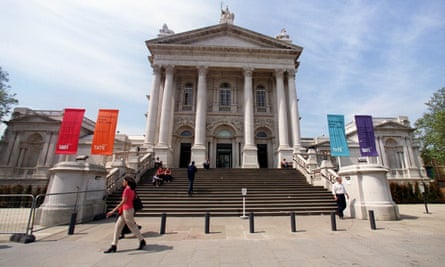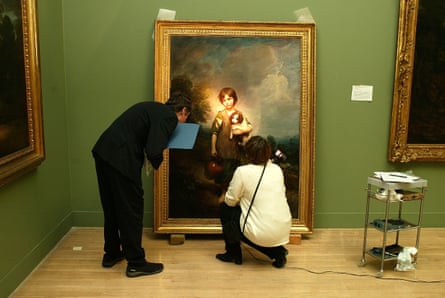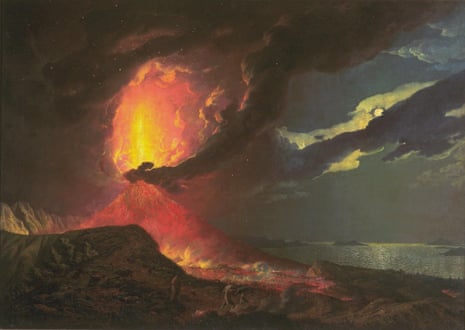In its 17 years of existence, Tate Britain has practically killed British art history. Drawn from the biggest collection of British art in the world, the gallery’s permanent displays – or, more accurately, incredibly impermanent displays – have achieved such a rare cocktail of superficiality, pretension, ugliness and willed ignorance that, after a couple of hours there, it is hard to feel any enthusiasm for the story of British art.
I was at Tate Britain the other day, looking hard at the collection displays. I have no choice, as I’m writing a history of British art. I would not take what the gallery currently calls its Walk Through British Art for fun. Even when you’ve good reason to go, it’s a slog. I left with a depressing sense that British art since the Tudor age was just one big brown and grey sludge, barren of beauty, bereft of genius.
So I should be glad, you might think, that Alex Farquharson, Tate Britain’s director, plans to change completely the way the gallery shows its collection. Again. Unfortunately, his plan sounds like a massive step backward, ignoring the museum’s real problems. Tate Britain seems blind to the fact that it has the potential to be one of Britain’s best-loved and most glorious museums, if only it showed some passion for the treasures it owns.
Farquharson is to reintroduce the thematic displays and explanatory labels that his shortlived predecessor, Penelope Curtis, banished. He’s going back to the style the museum opened with, rejecting traditional chronology and trying to engage the public with lots of wordy texts. So we are likely to get even fewer masterpieces on the walls. The world’s richest collection of British art will see still more highlights consigned to storage to make room for arrogant and insensitive curators to patronise us with lightweight “themes”.

The current displays are terrible – yet they are the least terrible this museum has mounted in its 17-year history. At least Curtis tried to show British art in some kind of historical order and hang a decent number of paintings. Even so, the missing masterpieces are baffling. It beggars belief that Tate Britain does not, at the moment, see any reason to display William Hogarth’s moving portrayal of his servants, one of the first and most powerful images of ordinary British people; Joseph Wright of Derby’s sublime vision of Vesuvius spewing fire, or James Ward’s Romantic masterpiece Gordale Scar.
These inexplicable absences from the current hang can only get worse if Tate Britain returns to the shallow thematic approach it started with in 2000. What misty nostalgia has convinced its custodians those early displays were a success?
Tate Britain’s real problem is that it does not love its own collection. Every time it does a rehang, the selectors reveal their lack of feeling for British art before the 20th century. It seems to be a requirement that, to work at the national museum of British art, you shouldn’t like the nation’s greatest art. You may say patriotism is best left to the right, but where does that leave a museum whose entire purpose is to display British art since the Tudor age?
The way things stand, if Tate Britain was honest, it would give away most of its collection. Since it is clearly desperate to be Tate Modern II, and only truly cares about contemporary art (it is not even trying to mount exhibitions of such masters as Holbein and Van Dyck, as it did under its founding director Stephen Deuchar), why not simply transfer its collection of pre-modern art to a range of public galleries such as the National Gallery, the V&A, and whichever regional museums fancy a Constable of their own?

Better still, this museum could finally grow up and learn to cherish its incredible inheritance of great art by Gainsborough and Whistler, Zoffany and Sargent. You say that’s old hat? But that is the art of Britain, and it is fill of surprises when you look at it properly. If it is in storage or shoehorned into “thematic” hangs, that makes looking at it very hard.
We’re entering a new period of British history. Who knows what the country will become after it leaves the EU? We can at least attempt to understand what it has been. Tate Britain’s collection is full of clues. It can show us everything from the industrial revolution and slavery to the history of horse racing. All it needs to do is put as much of that collection on view as possible, with an eye to history. It will then become indispensable. It might even be fun.

